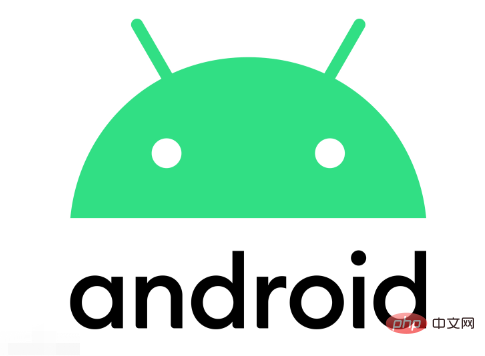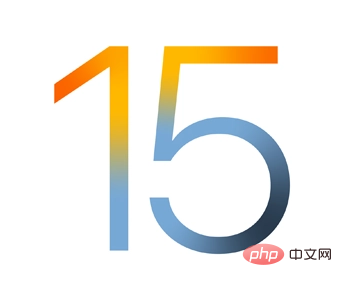What is the operating system of the second generation mobile Internet?
The operating systems of the second generation of mobile Internet are Android system and Apple ios system; Android system is a free and open source operating system based on the Linux kernel, mainly used for mobile devices, and Apple ios system belongs to the category Unix operating system, available on iPhone, iPod touch and iPad.

The operating environment of this tutorial: Windows 10 system, DELL G3 computer.
What is the operating system of the second generation of mobile Internet?
There are many first-generation mobile operating systems, such as Apple’s iso operating system, Nokia’s Symbian system, and Android system . The current mainstream systems are also second-generation systems, only Android and Apple systems.
Android (Android)
Android (Android) is a free and open source operating system based on the Linux kernel (excluding GNU components) . It is mainly used in mobile devices, such as smartphones and tablets, and is led and developed by the American Google Company and the Open Handset Alliance.
The Android operating system was originally developed by Andy Rubin and mainly supports mobile phones. In August 2005, it was acquired and invested by Google. In November 2007, Google formed the Open Handset Alliance with 84 hardware manufacturers, software developers and telecom operators to jointly develop and improve the Android system.
Subsequently, Google released the Android source code under the authorization of the Apache open source license. The first Android smartphone was released in October 2008. Android has gradually expanded to tablet computers and other areas, such as televisions, digital cameras, game consoles, smart watches, etc.
In the first quarter of 2011, Android’s global market share surpassed Symbian for the first time, ranking first in the world.

Apple (ios)
iOS is a mobile operating system developed by Apple. Apple first announced this system at the Macworld conference on January 9, 2007. It was originally designed for iPhone, and was later applied to iPod touch and iPad. iOS, like Apple's macOS operating system, is a Unix-like commercial operating system.
Originally this system was called iPhone OS. Because iPad, iPhone, and iPod touch all use iPhone OS, it was announced at the 2010 Apple Worldwide Developers Conference that it was renamed iOS (iOS is a network equipment operating system registered by Cisco Systems of the United States) Trademark, Apple's name change has been authorized by Cisco).
In January 2016, with the release of iOS 9.2.1, Apple fixed a 3-year-old vulnerability. On September 22, 2018, Apple in the United States secretly added a "trust rating" function based on iPhone users and other device users of the company in its latest operating system.
News on November 17, 2021, it is reported that Apple iOS 15.2 Beta leaked the new "SportsKit" framework.
On January 28, 2022, Apple pushed the iOS/iPadOS 15.4 Developer Preview Beta update (build number: 19E5209h) to iPhone and iPad users. This update is 2 weeks away from the last release. Time has brought new features such as Universal Control, new emoji expressions, and Apple Card widgets. [78] On February 22, it was reported that Apple iOS 15.4 will be released in March.

For more related knowledge, please visit the FAQ column!
The above is the detailed content of What is the operating system of the second generation mobile Internet?. For more information, please follow other related articles on the PHP Chinese website!

Hot AI Tools

Undresser.AI Undress
AI-powered app for creating realistic nude photos

AI Clothes Remover
Online AI tool for removing clothes from photos.

Undress AI Tool
Undress images for free

Clothoff.io
AI clothes remover

AI Hentai Generator
Generate AI Hentai for free.

Hot Article

Hot Tools

Notepad++7.3.1
Easy-to-use and free code editor

SublimeText3 Chinese version
Chinese version, very easy to use

Zend Studio 13.0.1
Powerful PHP integrated development environment

Dreamweaver CS6
Visual web development tools

SublimeText3 Mac version
God-level code editing software (SublimeText3)

Hot Topics
 1378
1378
 52
52
 Can I install mysql on Windows 7
Apr 08, 2025 pm 03:21 PM
Can I install mysql on Windows 7
Apr 08, 2025 pm 03:21 PM
Yes, MySQL can be installed on Windows 7, and although Microsoft has stopped supporting Windows 7, MySQL is still compatible with it. However, the following points should be noted during the installation process: Download the MySQL installer for Windows. Select the appropriate version of MySQL (community or enterprise). Select the appropriate installation directory and character set during the installation process. Set the root user password and keep it properly. Connect to the database for testing. Note the compatibility and security issues on Windows 7, and it is recommended to upgrade to a supported operating system.
 Can mysql and mariadb coexist
Apr 08, 2025 pm 02:27 PM
Can mysql and mariadb coexist
Apr 08, 2025 pm 02:27 PM
MySQL and MariaDB can coexist, but need to be configured with caution. The key is to allocate different port numbers and data directories to each database, and adjust parameters such as memory allocation and cache size. Connection pooling, application configuration, and version differences also need to be considered and need to be carefully tested and planned to avoid pitfalls. Running two databases simultaneously can cause performance problems in situations where resources are limited.
 Unable to log in to mysql as root
Apr 08, 2025 pm 04:54 PM
Unable to log in to mysql as root
Apr 08, 2025 pm 04:54 PM
The main reasons why you cannot log in to MySQL as root are permission problems, configuration file errors, password inconsistent, socket file problems, or firewall interception. The solution includes: check whether the bind-address parameter in the configuration file is configured correctly. Check whether the root user permissions have been modified or deleted and reset. Verify that the password is accurate, including case and special characters. Check socket file permission settings and paths. Check that the firewall blocks connections to the MySQL server.
 Do mysql need to pay
Apr 08, 2025 pm 05:36 PM
Do mysql need to pay
Apr 08, 2025 pm 05:36 PM
MySQL has a free community version and a paid enterprise version. The community version can be used and modified for free, but the support is limited and is suitable for applications with low stability requirements and strong technical capabilities. The Enterprise Edition provides comprehensive commercial support for applications that require a stable, reliable, high-performance database and willing to pay for support. Factors considered when choosing a version include application criticality, budgeting, and technical skills. There is no perfect option, only the most suitable option, and you need to choose carefully according to the specific situation.
 Unable to access mysql from terminal
Apr 08, 2025 pm 04:57 PM
Unable to access mysql from terminal
Apr 08, 2025 pm 04:57 PM
Unable to access MySQL from the terminal may be due to: MySQL service not running; connection command error; insufficient permissions; firewall blocks connection; MySQL configuration file error.
 Can mysql run on android
Apr 08, 2025 pm 05:03 PM
Can mysql run on android
Apr 08, 2025 pm 05:03 PM
MySQL cannot run directly on Android, but it can be implemented indirectly by using the following methods: using the lightweight database SQLite, which is built on the Android system, does not require a separate server, and has a small resource usage, which is very suitable for mobile device applications. Remotely connect to the MySQL server and connect to the MySQL database on the remote server through the network for data reading and writing, but there are disadvantages such as strong network dependencies, security issues and server costs.
 Can mysql handle multiple connections
Apr 08, 2025 pm 03:51 PM
Can mysql handle multiple connections
Apr 08, 2025 pm 03:51 PM
MySQL can handle multiple concurrent connections and use multi-threading/multi-processing to assign independent execution environments to each client request to ensure that they are not disturbed. However, the number of concurrent connections is affected by system resources, MySQL configuration, query performance, storage engine and network environment. Optimization requires consideration of many factors such as code level (writing efficient SQL), configuration level (adjusting max_connections), hardware level (improving server configuration).
 How to solve mysql cannot connect to local host
Apr 08, 2025 pm 02:24 PM
How to solve mysql cannot connect to local host
Apr 08, 2025 pm 02:24 PM
The MySQL connection may be due to the following reasons: MySQL service is not started, the firewall intercepts the connection, the port number is incorrect, the user name or password is incorrect, the listening address in my.cnf is improperly configured, etc. The troubleshooting steps include: 1. Check whether the MySQL service is running; 2. Adjust the firewall settings to allow MySQL to listen to port 3306; 3. Confirm that the port number is consistent with the actual port number; 4. Check whether the user name and password are correct; 5. Make sure the bind-address settings in my.cnf are correct.



